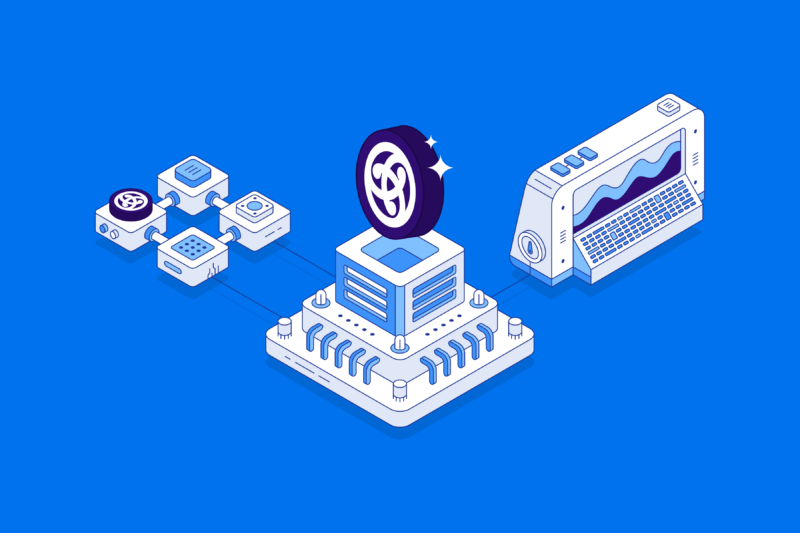
How does Astar Network work?
Astar Network is an open-source, permissionless blockchain. This means that anyone can share in decentralised ownership of, and contribute to, the network.
Astar architecture
Astar’s architecture is based on Polkadot’s “parachain” technology. Hosted by Polkadot’s relay chain, each parachain is a custom-built blockchain with its own set of distinct rules. Parachain platforms can then communicate with one another via the relay chain trustlessly, creating a burgeoning, interoperable ecosystem. Astar is building a highly-connected network that allows dApps to persist across multiple blockchains – so Polkadot’s architecture is a perfect fit.
Astar’s framework is based on two different virtual machine environments, though they coexist on the same chain. The native environment is Wasm-compatible, and is thought to be a next generation smart contract platform compared to the Ethereum Virtual Machine, and offers a wider range of compatibility with programming languages that are typically familiar to web2 developers such as Rust and C++. Astar’s dual Virtual machine environment, made interoperable by their proprietary cross-virtual machine (XVM) compatibility layer, allows developers to selectively offload storage or functions that can be more efficiently executed on one or the other VM, empowering developers to create powerful decentralised applications that can’t be replicated on any other platform.
What makes Astar unique?
Multi-Virtual Machine smart contract environment
Astar Network’s core selling point is its compatibility across multiple blockchains. As a Polkadot-native chain that also supports an Ethereum Virtual Machine environment, Astar is automatically compatible with the vast majority of Web3 decentralised applications, which could make it a potential destination for Web3 users and creators alike. So, with Astar’s XVM development kit, the best up-and-coming project devs will find a natural fit building on Astar.
Another feather in Astar’s cap is its support for WebAssembly (Wasm.) This is a huge boon for app creators, as Wasm can port various coding languages across different machines and network infrastructures. This flexibility, paired with WebAssembly’s greater throughput capacity, makes it a vital technology for improving the efficiency of high-traffic dApps (such as Web3 gaming and decentralised exchanges).
In simple terms, Astar’s multi-chain, multi-virtual machine environment allows different programming languages and smart contract platforms to interact with each other.
dApp staking
Developers on Astar have a lot of wriggle room when it comes to designing their applications. But the Astar team have added a financial incentive for developers to encourage top new projects and developers to build on the Astar network. This comes from an innovative program called “dApp staking”.
Traditionally, block rewards from networks like Bitcoin, Ethereum, and Polkadot are reserved for miners or validators – those responsible for adding new blocks to their respective chain. Meanwhile, decentralised application developers building on these chains don’t see any form of compensation for their contribution to the greater ecosystem.
Astar splits its block rewards 50/50 between block validators and dApp developers to rectify this. The system is fairly simple – community members can pick a project they wish to support. Then, income generated from locking up the ASTR tokens is shared between the “dApp Staker” and the chosen dApp developer(s) via emissions.
Disclaimer: The information on Swyftx Learn is for general educational purposes only and should not be taken as investment advice, personal recommendation, or an offer of, or solicitation to, buy or sell any assets. It has been prepared without regard to any particular investment objectives or financial situation and does not purport to cover any legal or regulatory requirements. Customers are encouraged to do their own independent research and seek professional advice. Swyftx makes no representation and assumes no liability as to the accuracy or completeness of the content. Any references to past performance are not, and should not be taken as a reliable indicator of future results. Make sure you understand the risks involved in trading before committing any capital. Never risk more than you are prepared to lose. Consider our Terms of Use and Risk Disclosure Statement for more details.


 Article read
Article read



